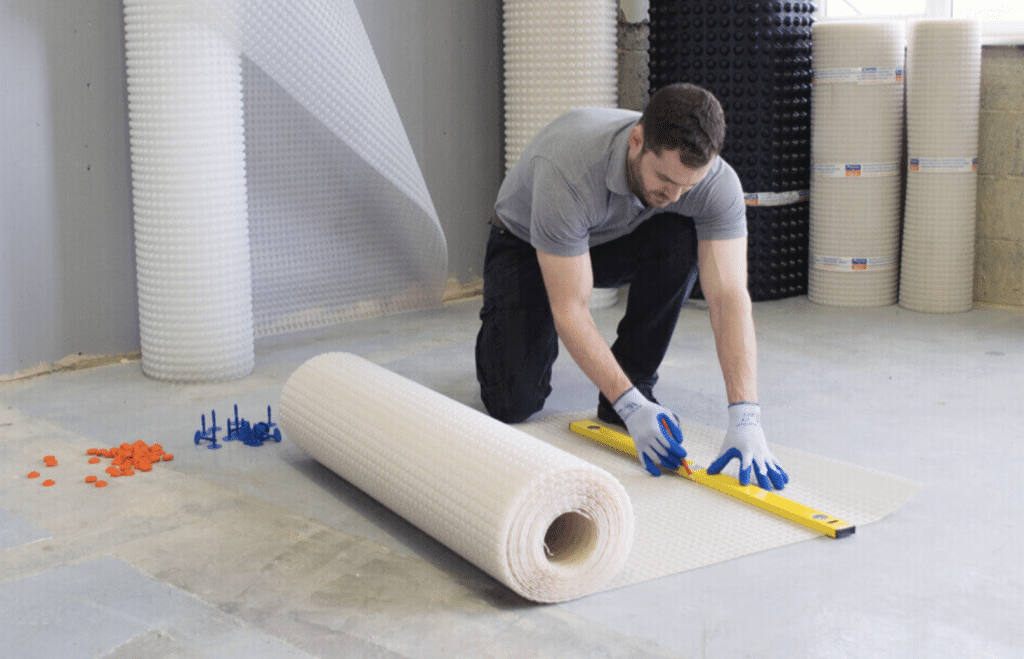Domestic dampness is not just a nuisance—it is a source of structural damage, sickness, and lower the value of your house. As a homeowner, landlord, or builder, it is crucial to discover how to stop and cure damp to get a healthy and secure place to stay. Damp proofing is the ideal remedy for the issue. It is a system of procedures and materials utilized to keep water from moving through walls, floors, and ceilings.
In this article, we’ll explore what damp proofing is, why it’s necessary, and the various methods used to protect buildings from damp-related issues.
1. What Is Damp Proofing?
Damp proofing is a treatment provided for the prevention of water from entering the inside of the building. It is for the creation of a water barrier to the external face of the building structure. It is provided primarily at the building construction stage but can be retro-fitted on the buildings that have already been constructed and prone to dampness.
The treatment may include:
Chemical treatments
Physical membranes
Drainage systems
Waterproof coatings
These treatments are designed to deal with all types of damp, whether it be rising damp, penetrating damp, or condensation.
2. Why Damp Proofing?
a) Stops Structural Damage
Water will rot material such as wood, plaster, and brick. Damp, left uncontrolled, will rot, spall the mortar, and destroy foundations in the long term.
b) Protects Health
Moisture encourages dust mite, bacteria, and mold growth. Nourishes respiration disease, allergic reactions, and other ailments in children and the elderly.
c) Maintains Property Value. Damp-infested property will definitely result in loss to its market value. Damp-infested houses can be shunned by potential homebuyers, or even sub-market prices are paid if dampness is found in the house.
d) Improves Living Conditions
A dry house with ventilation is cleaner, fresher, and warmer. Damp proofing offers extra cleanliness and comfort.
e) Saves Energy Bills
Damp walls take heat away from your home and are more costly to heat. That’s more energy usage and more bills.
f) Stops Pest Infestation
Damp attracts pests such as termites, woodlice, and silverfish. Damp proofing limits the damp area where the pests thrive.
g) Required with Renovation Work
During house construction, particularly basement ground or in older properties, damp proofing must be done to provide long term treatment.
h) Under the Law
Because most landlords across regions are obligated by law to make their homes mold and damp free, damp proofing automatically keeps you housing law compliant.
3. Common Types of Damp
Discover what damp you have so that you select the correct sort of internal damp proofing treatment
Rising Damp: Because of rising ground water moving through walls and floors by means of capillary action.
Penetrating Damp: By wall fault through rotten roof, guttering, or structural crack.
Condensation: Because of damp air reaching cold surface, usually observed on walls, windows, and ceilings.
No matter the cause of the damp that you are having, it needs to be treated by a certain process.
4. Damp Proofing Measures
a) Damp Proof Course (DPC)
DPC is a slab of slate, plastic, or bitumen inserted into wall foundations to keep water out of the wall.
b) Damp Proof Membrane (DPM)
DPM is a layer of water inserted in place beneath floors made of concrete due to the desire not to allow water inside from the ground.
c) Chemical Injection
It contains a chemical comprised of silicone which is injected into walls where openings are created in order for it to adhere. It is an emergence damp sealant and treated to historic structures.
d) Waterproof Paint and Coatings
They are applied in an attempt to cover outer or inner walls in a way that water can’t penetrate through. Applied onto low-level damp or second treatment.
) Tank Slurry
Used primarily on cellar walls and basement walls, tanking slurry is cement-based seal coat directly applied to masonry in an effort to exclude water.
f) Cavity Drainage Systems
These consist of the installation of drainage membranes that drain water into an administration drainage system, highly fashionable in basements.
g) Repointing and External Repairs
Faulty waterproofing of roof tile or mortar joint defect will prevent penetrating damp. Well-laid gutters and functional wall pointing are needed.
h) Ventilation and Dehumidification
Where required, exclusion of damp by treatment of condensation can be simple as provision of opening up air circulation or provision of dehumidification for kitchen and bathroom area.
5. You Must Damp Proof
Note the following:
Peeling or flaking paint or peeling paper
Mouldy or musty odours
Discolouration or patches of dampness on ceilings and walls
Rotting skirting boards or floorboards
Mould on furniture corners or at the back of furniture
Damp or cold walls
Peeling plaster or flaking surface
If you find any of the above, it is worth inviting a damp expert to conduct a proper survey.
6. Engaging a Damp Proofing Expert
When engaging a contractor:
Select damp-proofing Yorkshire contractors who are members of damp-proofing organizations.
Conduct a comprehensive survey and written report.
Warranty—reliable suppliers offer 20- or 30-year guarantees.
Read reviews and ask for referrals from existing customers.
Hiring a professional will get the job done professionally and effectively.
